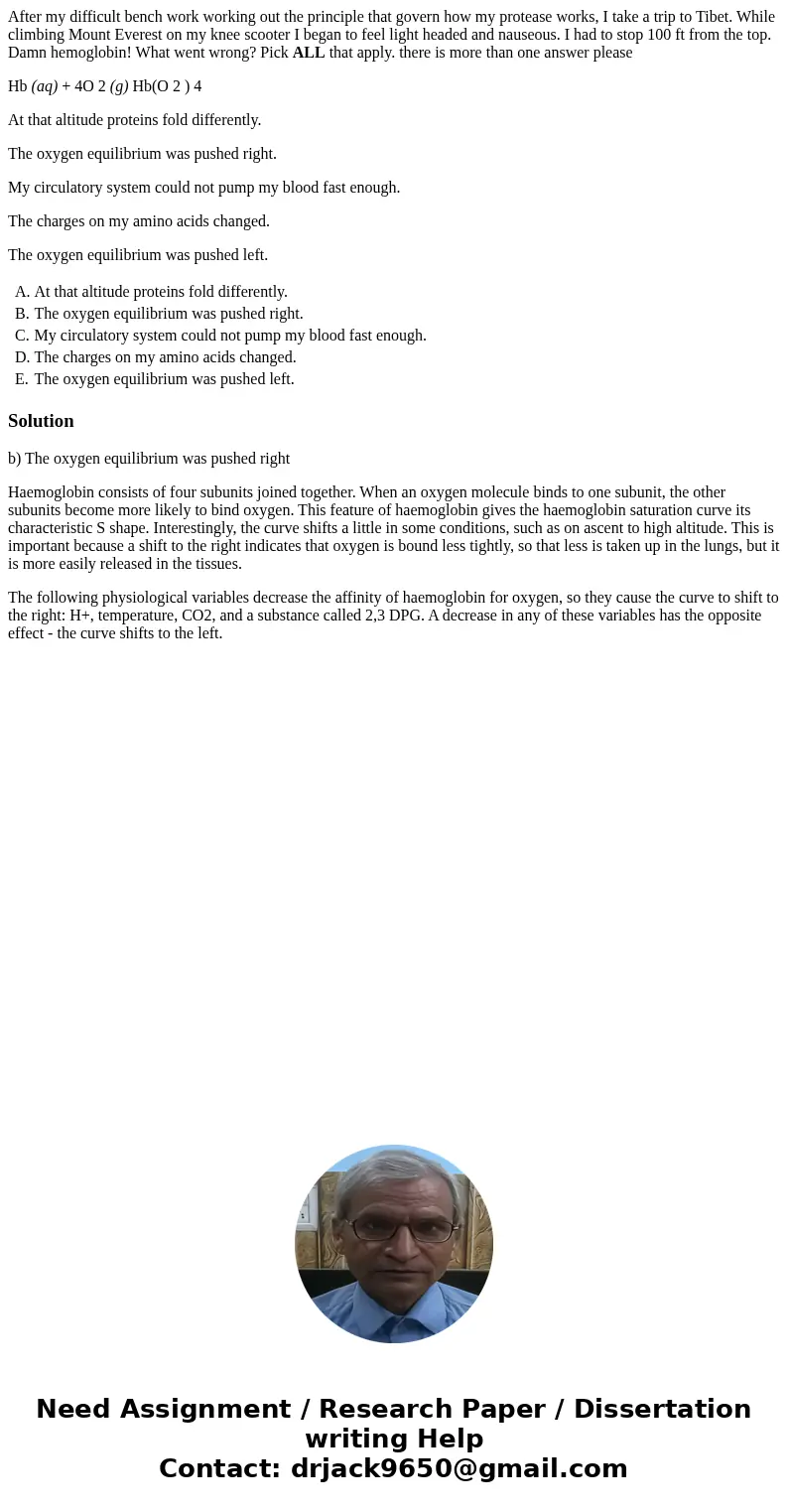After my difficult bench work working out the principle that
After my difficult bench work working out the principle that govern how my protease works, I take a trip to Tibet. While climbing Mount Everest on my knee scooter I began to feel light headed and nauseous. I had to stop 100 ft from the top. Damn hemoglobin! What went wrong? Pick ALL that apply. there is more than one answer please
Hb (aq) + 4O 2 (g) Hb(O 2 ) 4
At that altitude proteins fold differently.
The oxygen equilibrium was pushed right.
My circulatory system could not pump my blood fast enough.
The charges on my amino acids changed.
The oxygen equilibrium was pushed left.
| A. | At that altitude proteins fold differently. | |
| B. | The oxygen equilibrium was pushed right. | |
| C. | My circulatory system could not pump my blood fast enough. | |
| D. | The charges on my amino acids changed. | |
| E. | The oxygen equilibrium was pushed left. |
Solution
b) The oxygen equilibrium was pushed right
Haemoglobin consists of four subunits joined together. When an oxygen molecule binds to one subunit, the other subunits become more likely to bind oxygen. This feature of haemoglobin gives the haemoglobin saturation curve its characteristic S shape. Interestingly, the curve shifts a little in some conditions, such as on ascent to high altitude. This is important because a shift to the right indicates that oxygen is bound less tightly, so that less is taken up in the lungs, but it is more easily released in the tissues.
The following physiological variables decrease the affinity of haemoglobin for oxygen, so they cause the curve to shift to the right: H+, temperature, CO2, and a substance called 2,3 DPG. A decrease in any of these variables has the opposite effect - the curve shifts to the left.

 Homework Sourse
Homework Sourse